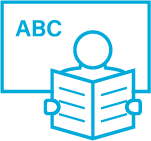The Role of Academic Buoyancy and Emotions in Students’ Learning-Related Expectations and Behaviours in Primary School
The findings of this study showed that high academic buoyancy indirectly predicted lower avoidance behaviour, fewer failure expectations, and higher task-oriented planning via academic emotions. High academic buoyancy was related to high enjoyment and hope as well as low boredom and hopelessness, which further predicted low failure expectations. The findings suggest that academic buoyancy supports positive expectations and adaptive behaviours in learning situations through the regulation of emotions.
Authors: Riikka Hirvonen, David W. Putwain, Sami Määttä, Timo Ahonen & Noona Kiuru
Source: Hirvonen, R., Putwain, D.W., Määttä, S., Ahonen, T., & Kiuru, N. (2020). The role of academic buoyancy and emotions in students’ learning-related expectations and behaviours in primary school. British Journal of Educational Psychology, 90, 948-963. DOI:10.1111/bjep.12336
This study investigated the extent to which academic buoyancy predicts students’ failure expectations, avoidance behaviour, and task-oriented planning in learning situations, and to what extent academic emotions mediate the effect of academic buoyancy on these expectations and behaviours. The sample consisted of 845 Finnish students in the sixth grade of primary school. The findings showed that high academic buoyancy indirectly predicted lower avoidance behaviour, fewer failure expectations, and higher task-oriented planning via academic emotions. High academic buoyancy was related to high enjoyment and hope as well as low boredom and hopelessness, which further predicted low failure expectations. The findings suggest that academic buoyancy supports positive expectations and adaptive behaviours in learning situations through the regulation of emotions.
- Previous studies have shown learning-related beliefs and behaviours play a significant role in learning.
- It may be presumed that learning-related expectations and behaviours are influenced by previous learning experiences.
Defining academic buoyancy
- Academic buoyancy refers to students’ ability to successfully respond to everyday academic setbacks and challenges, such as poor grades or negative feedback.
- It is related to higher performance in standardised literacy and numeracy tests.
- It has been associated with high self-efficacy, persistence, and planning, high emotional and behavioural school engagement, effective learning strategies, and low self-handicapping.
- It can support students’ learning-related self-perceptions and promote subsequent success expectations and task-oriented behaviours.
- It may contribute to expectations and behaviours indirectly by creating a positive emotional atmosphere in learning situations.
The mediating role of academic emotions
- Academic emotions are defined as emotions that relate directly to achievement activities or outcomes.
- Outcome emotions are related to anxiety of possible failure and pride of previous success.
- Activity emotions are related to boredom or enjoyment of learning.
- Valence of emotions differentiates between positive versus negative emotions, and activation of emotions refers to the level of physiological activation that emotions invoke.
- The control–value theory suggests that different outcome- and activity-related emotions are the function of students’ control and value appraisals.
- Positive activating emotions (such as enjoyment of learning, hope, and pride) can promote motivation, effort, use of adaptive learning strategies, and self-regulated learning.
Learning-related expectations and behaviours
- The present study focused on three types of learning-related beliefs and behaviours as outcomes of academic buoyancy and emotions:
- one representing negative beliefs (failure expectations)
- one representing maladaptive behaviour (avoidance behaviour)
- one representing an adaptive strategy (task-oriented planning).
Transition to lower secondary school in Finland
- The present study focused on students in the last grade of primary school before their important transition to lower secondary school.
- In Finland, this transition takes place at 12 or 13 years of age.
- In addition to going through biological, cognitive, and psychological changes related to puberty, students at this age face changes in their daily life at school as a result of the school transition.
- They move from a classroom teacher system to a subject teacher system, start to study new subjects, and often change to another school.
- As a result of these changes, students’ motivation and effort can decrease and negative attitudes towards school increase during the school transition.
The present study
The present study examined the role of seven academic emotions as mediators in the relationship between academic buoyancy and learning-related expectations and behaviours. Of these emotions, three were positive activating (enjoyment, hope, and pride), two were negative activating (anxiety and shame), and two were negative deactivating (boredom and hopelessness).
Hypotheses:
- Buoyancy was expected to relate positively to positive emotions and negatively to negative emotions.
- High enjoyment, hope, and pride were expected to further relate to low levels of avoidance behaviour and failure expectations as well as high task-oriented planning.
- Boredom and hopelessness were expected to be related to high avoidance behaviour, high failure expectations, and low task-oriented planning.
- It was expected that anxiety and shame would have positive effects on task-oriented planning and negative effects on avoidance behaviour and failure expectations.
Methods
Participants were 845 Finnish sixth-grade students with an age range at the beginning of the study of 11.6–14.8 years. Two trained testers collected the data in the classrooms on normal school days in the autumn (T1) and spring (T2) of Grade 6.
Findings
- Failure expectations were indirectly explained by buoyancy via enjoyment: higher academic buoyancy was related to more enjoyment, which in turn was related to decreased failure expectations.
- Similarly, buoyancy indirectly explained avoidance behaviour, failure expectations, and task-oriented planning via hope: higher academic buoyancy was related to higher hope, which was related to decreased avoidance behaviour and failure expectations and increased task-oriented planning.
- Avoidance behaviour and failure expectations were indirectly explained by buoyancy via boredom: low academic buoyancy was related to higher boredom, which in turn was related to increased avoidance behaviour and failure expectations.
- Failure expectations were indirectly explained by buoyancy via hopelessness: low academic buoyancy was related to higher hopelessness, which was further related to high failure expectations.
Conclusions
- The results show that the effect of high buoyancy at the beginning of sixth grade on low avoidance behaviour, low failure expectations, and high task-oriented planning at the end of the sixth grade was fully mediated by students’ emotions.
- The findings suggest that an adaptive role for buoyancy in relation to positive academic outcomes is partly achieved through the regulation of academic emotions.
- Interestingly, pride, anxiety, and shame were not found to mediate the effect of academic buoyancy on learning-related beliefs and behaviours.
- The findings highlight the importance of positive-activating emotions in supporting primary school students’ adaptive learning-related beliefs and behaviours and the role of negative deactivating emotions in increasing maladaptive beliefs and behaviours.
- According to control–value theory, students’ appraisals of their subjective control over learning situations and outcomes are crucial for the arousal of positive and negative emotions.
- The sense of this subjective control could be reinforced by rehearsing academic buoyancy.
- Buoyancy could be a fruitful target of intervention studies in promoting students’ positive learning experiences, adaptive functioning, and performance at school.
- Attention should be paid to students’ positive emotional experiences at school, their feelings of being in control of their learning, and their skills and confidence to overcome challenges, because these promote students’ enjoyment of learning and their effort with learning tasks.



